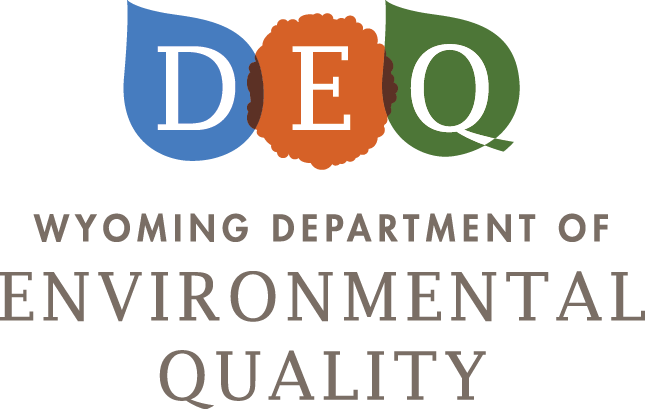- Home
- Public
- Resources
- Advanced Search
- Advisory Boards
- Careers
- District Offices
- e-Payment
- Enforcement Actions
- Meet the Director
- Mission Statement and Values
- Nondiscrimination Policy
- Outreach and Public Information
- Public Comments Online Portal
- Public Notices
- Records Requests
- Spill and Complaints
- State of the Environment
- Topics
- Divisions
- News
- Calendar
Regional Haze
- Home
- Air Quality
- Rule Development
- Regional Haze
If the download box is not working below, please click here.
Did you know that Ownership Change Forms should be filled out when facility acquisitions occur and/or company name changes take place? The Air Quality Division has attached the Change of Ownership Forms for Minor Sources and Title V Facilities below for your convenience. These forms need to be completed and mailed to the following address:
ATTN: Planning Section
Wyoming DEQ - Air Quality Division
200 W 17th St, Ste 300
Third Floor
Cheyenne, WY 82002
It is important to submit completed ownership changes in a timely manner as IMPACT portal users will not have access to newly-acquired facilities until the completed forms are received and processed.
If you have any questions about ownership changes, please feel free to email deq-air-impact@wyo.gov or contact a staff member by phone at 307-777-7391.
Below are forms associated with ownership change.
If the download box is not working below, please click here.
Search all Air Quality webpage forms and documents below.
If the download box is not working below, please click here.
All official Wyoming State Rules and Regulations are kept at the Wyoming Secretary of State’s Office. Click here to view all current Rules and Regulations.
Regional Haze
In 1999, the U.S. Environmental Protection Agency published a final rule to address haze causing pollution in national parks and wilderness areas (Class I Areas) in the United States.
The rule, referred to as the Regional Haze Rule, requires states, in coordination with the Environmental Protection Agency, the National Park Service, U.S. Fish and Wildlife Service, the U.S. Forest Service, and other interested parties, to develop and implement air quality protection plans to reduce the pollution that causes visibility impairment. The rule can be found in Title 40 (Protection of Environment) of the Code of Federal Regulations (CFR) §51.308. The rule was designed to meet the requirements of Sections 169A and 169B of the Clean Air Act. The EPA published a revised Regional Haze Rule on January 10, 2017 in the Federal Register that made changes to clarify or revise certain provisions of the rule and to remove provisions that were superseded.
The revised rule can be found in the Federal Register here:
https://www.govinfo.gov/content/pkg/FR-2017-01-10/pdf/2017-00268.pdf
Regional haze and visibility impairment will be addressed in a series of planning periods. The first planning period ended in 2018 and the second planning period began. The second planning period goes through 2028, and states must submit their State Implementation Plans (SIPs) for meeting the Regional Haze Rule requirements by July 31, 2021.
As the Wyoming Department of Environmental Quality – Air Quality Division (AQD) develops its plan for addressing regional haze, it will post material related to the regional haze planning process in this section of the AQD’s website
As part of the planning process, the regional haze rule requires states to consider four statutory factors when determining which controls to consider for making reasonable progress. On December 10, 2019, the Wyoming AQD held a webinar to assist operators and sources with conducting the four-factor analyses.
A copy of the webinar presentation can be accessed in the downloader below.
EPA’s Guidance on Regional Haze State Implementation Plans for the Second Planning Period:
https://www.epa.gov/sites/production/files/2019-08/documents/8-20-2019_-_regional_haze_guidance_final_guidance.pdf
EPA’s website for Visibility and Regional Haze:
https://www.epa.gov/visibility
Introduction to Visibility:
https://www.epa.gov/sites/production/files/2016-07/documents/introvis.pdf
EPA RH Story Map:
https://epa.maps.arcgis.com/apps/Cascade/index.html?appid=e4dbe2263e1f49fb849af1c73a04e2f2
EPA Cost Manual:
https://www.epa.gov/economic-and-cost-analysis-air-pollution-regulations/cost-reports-and-guidance-air-pollution#cost%20manual
Tools for Estimating Cost:
https://www.epa.gov/economic-and-cost-analysis-air-pollution-regulations/cost-analysis-modelstools-air-pollution#cost%20manual











